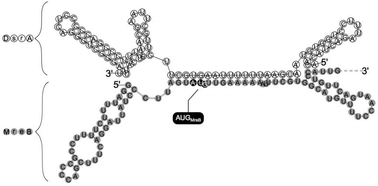Riboregulation of the bacterial actin-homolog MreB by DsrA small noncoding RNA†
Abstract
The bacterial actin-homolog MreB is a key player in bacterial cell-wall biosynthesis and is required for the maintenance of the rod-like morphology of Escherichia coli. However, how MreB cellular levels are adjusted to growth conditions is poorly understood. Here, we show that DsrA, an E. coli small noncoding RNA (sRNA), is involved in the post-transcriptional regulation of mreB. DsrA is required for the downregulation of MreB cellular concentration during environmentally induced slow growth-rates, mainly growth at low temperature and during the stationary phase. DsrA interacts in an Hfq-dependent manner with the 5′ region of mreB mRNA, which contains signals for translation initiation and thereby affects mreB translation and stability. Moreover, as DsrA is also involved in the regulation of two transcriptional regulators, σS and the nucleoid associated protein H–NS, which negatively regulate mreB transcription, it also indirectly contributes to mreB transcriptional down-regulation. By using quantitative analyses, our results evidence the complexity of this regulation and the tangled interplay between transcriptional and post-transcriptional control. As transcription factors and sRNA-mediated post-transcriptional regulators use different timescales, we propose that the sRNA pathway helps to adapt to changes in temperature, but also indirectly mediates long-term regulation of MreB concentration. The tight regulation and fine-tuning of mreB gene expression in response to cellular stresses is discussed in regard to the effect of the MreB protein on cell elongation.


 Please wait while we load your content...
Please wait while we load your content...